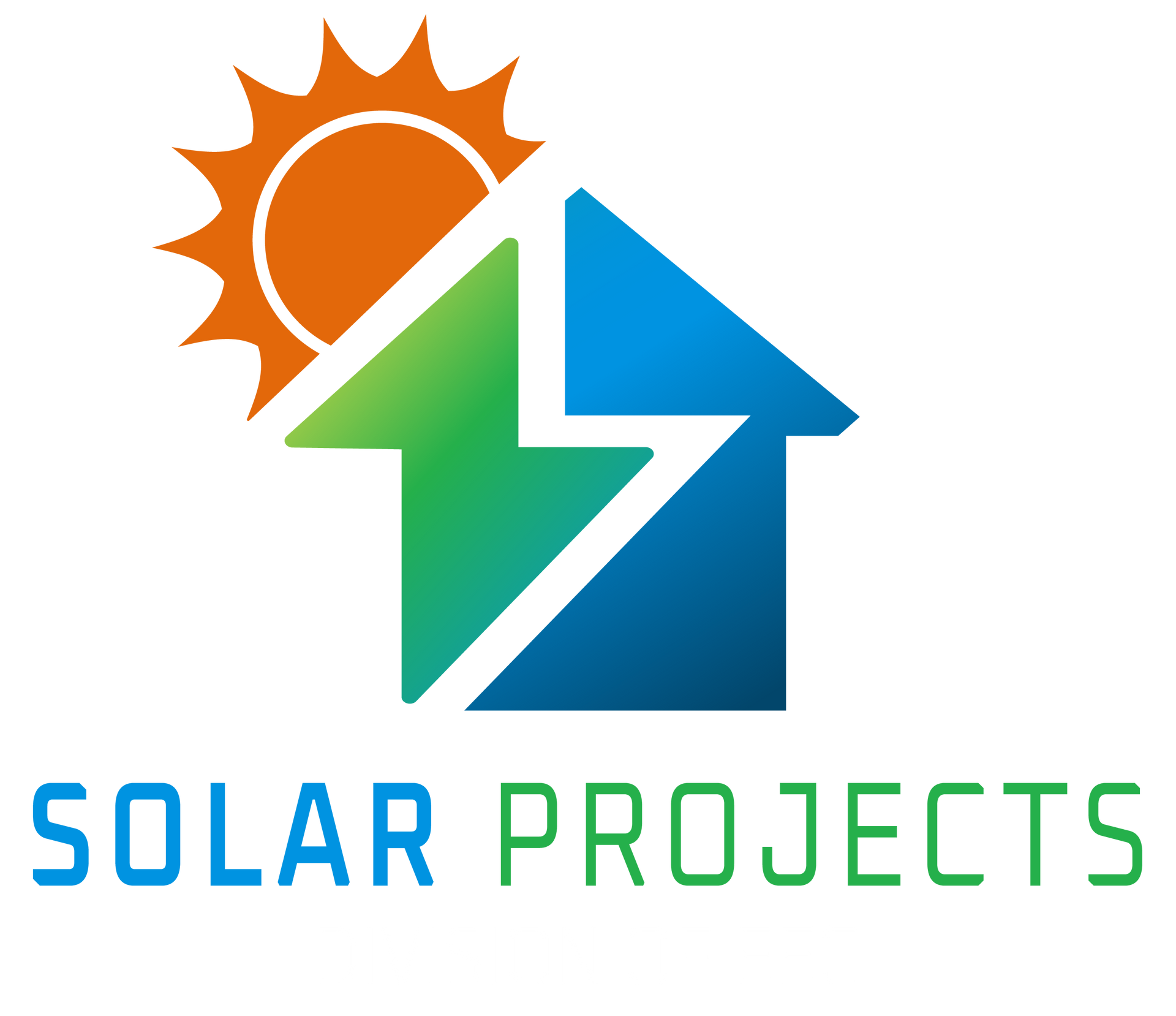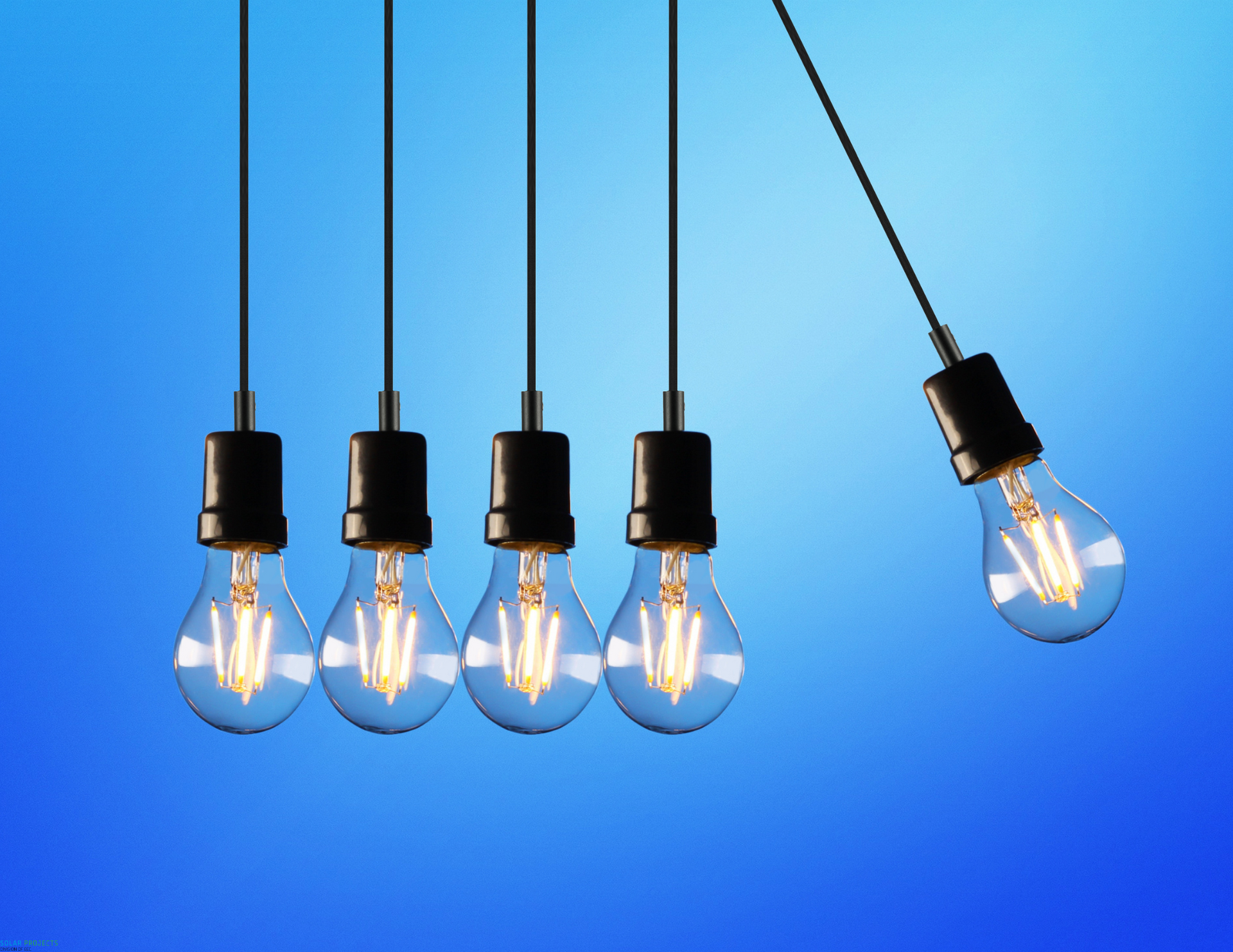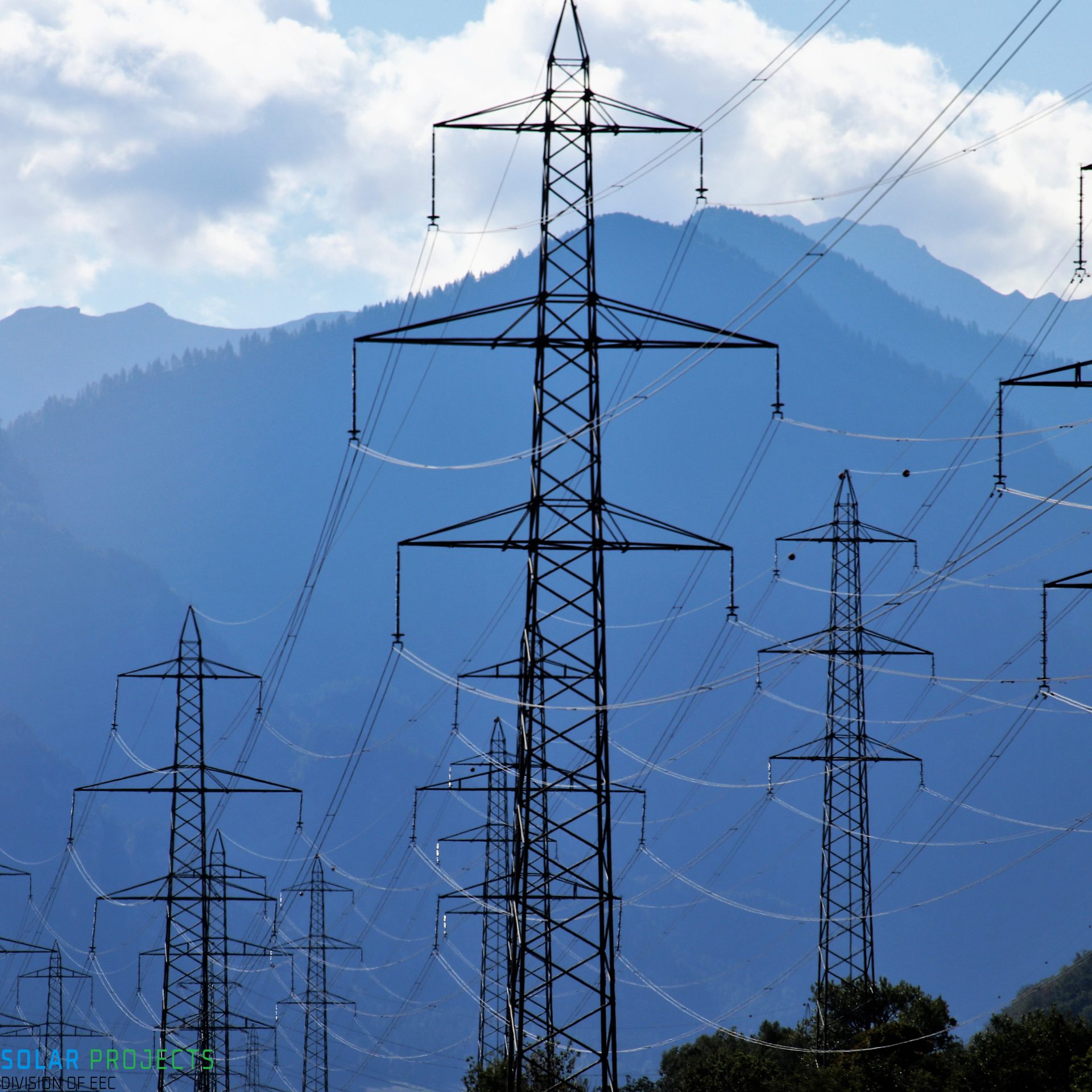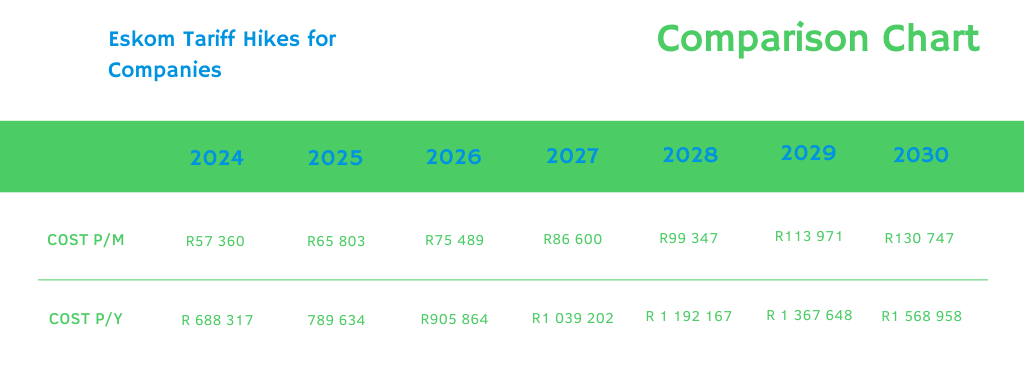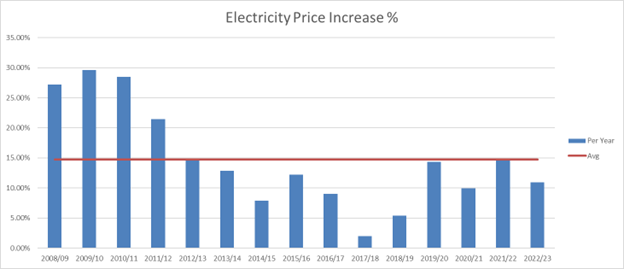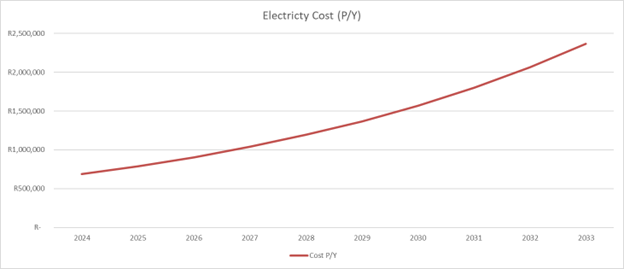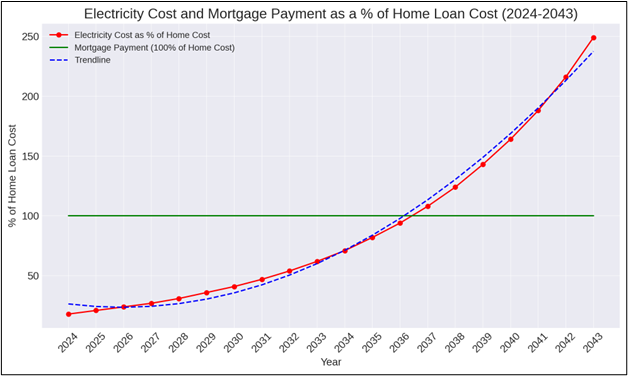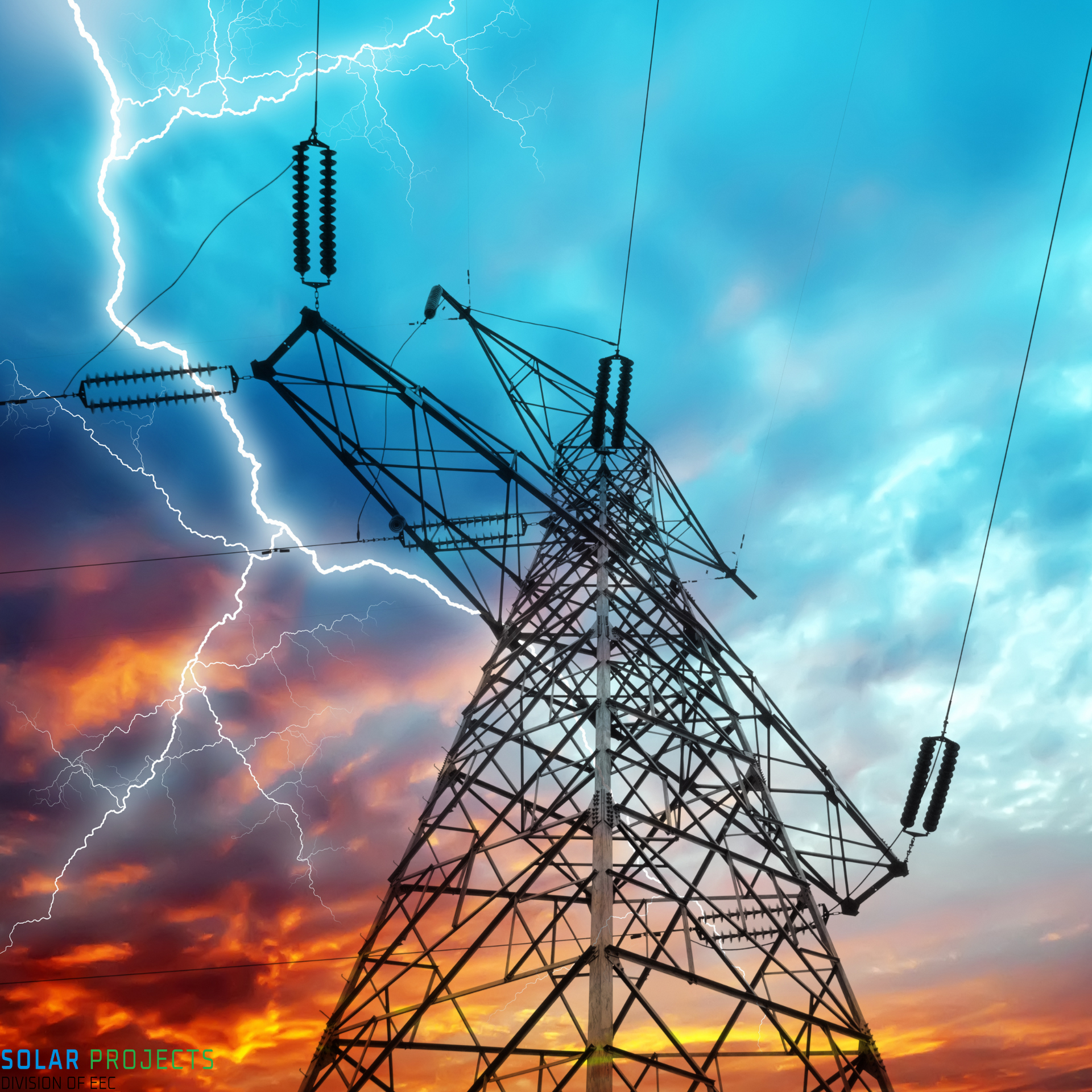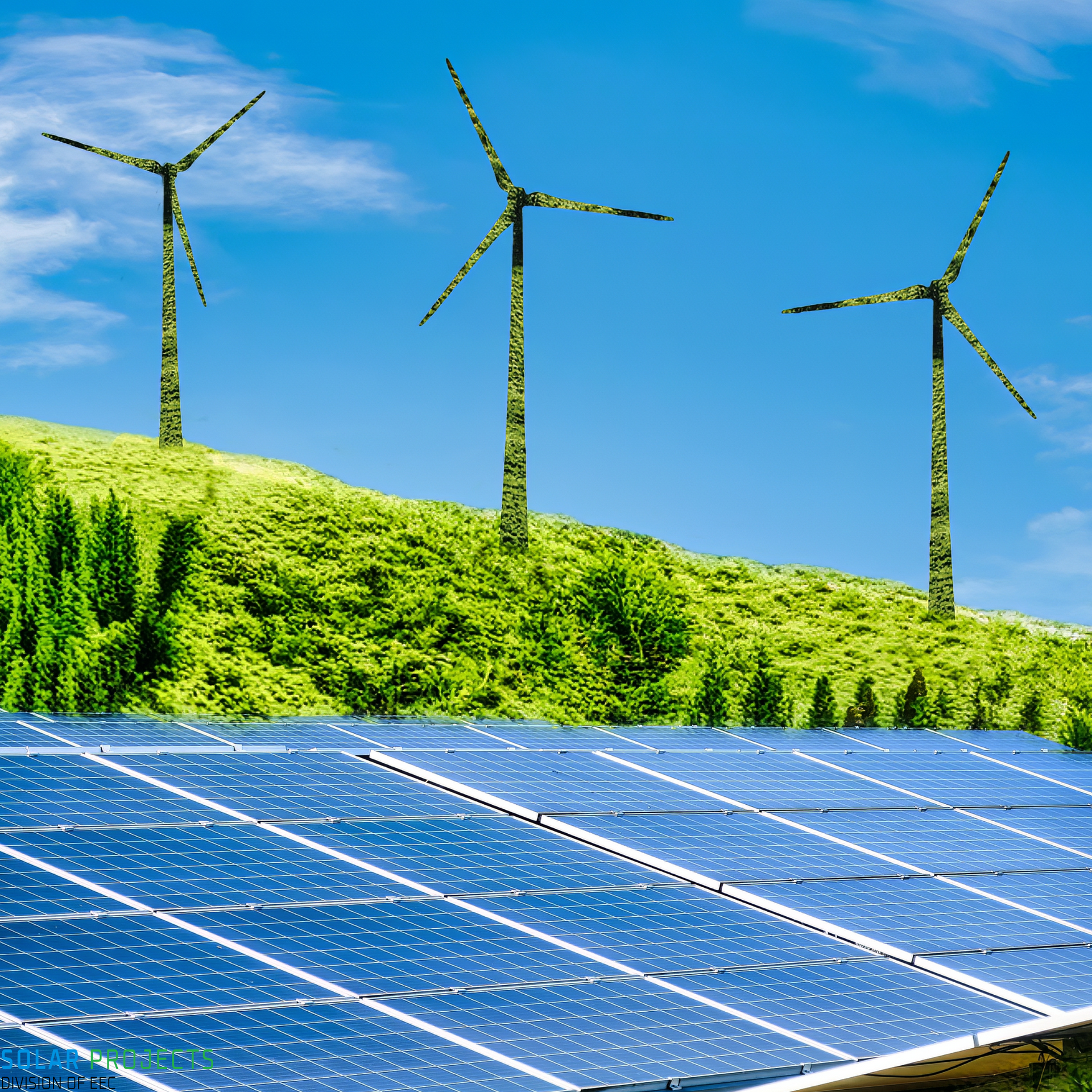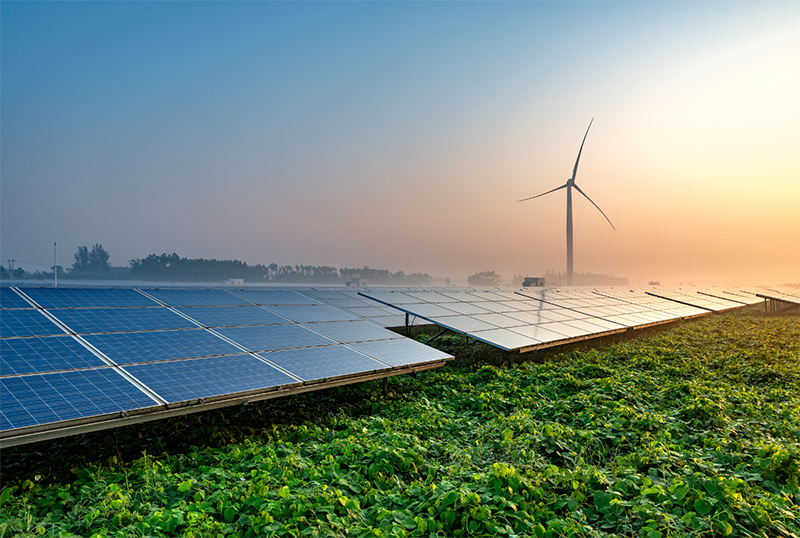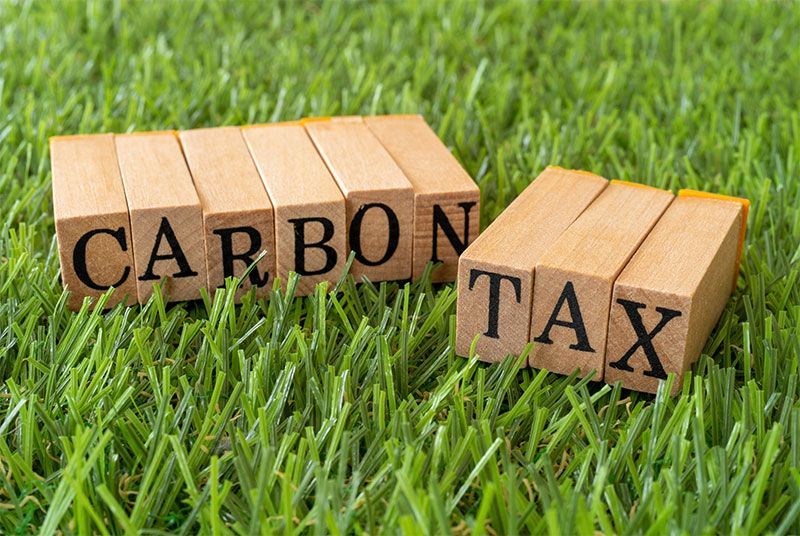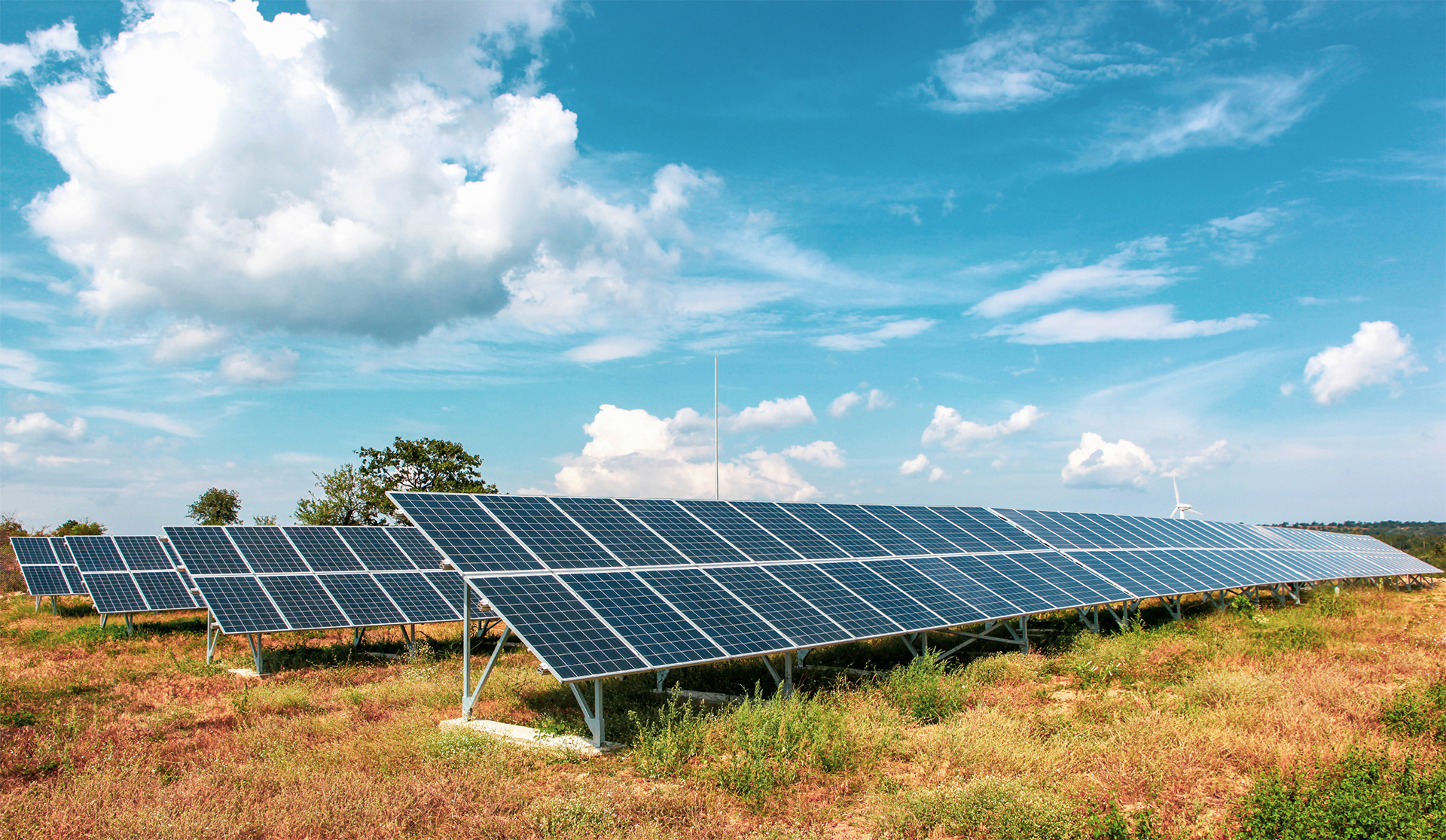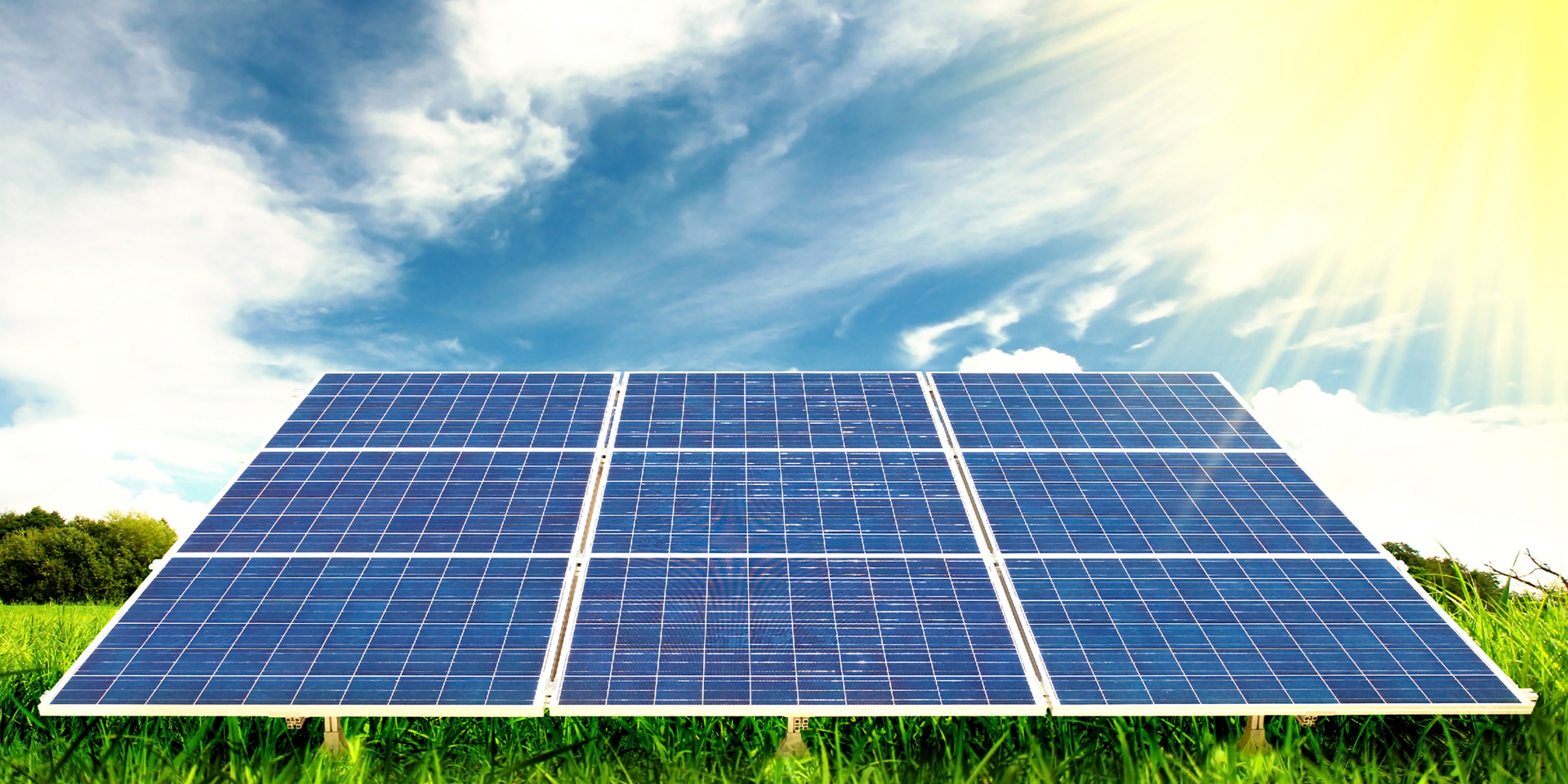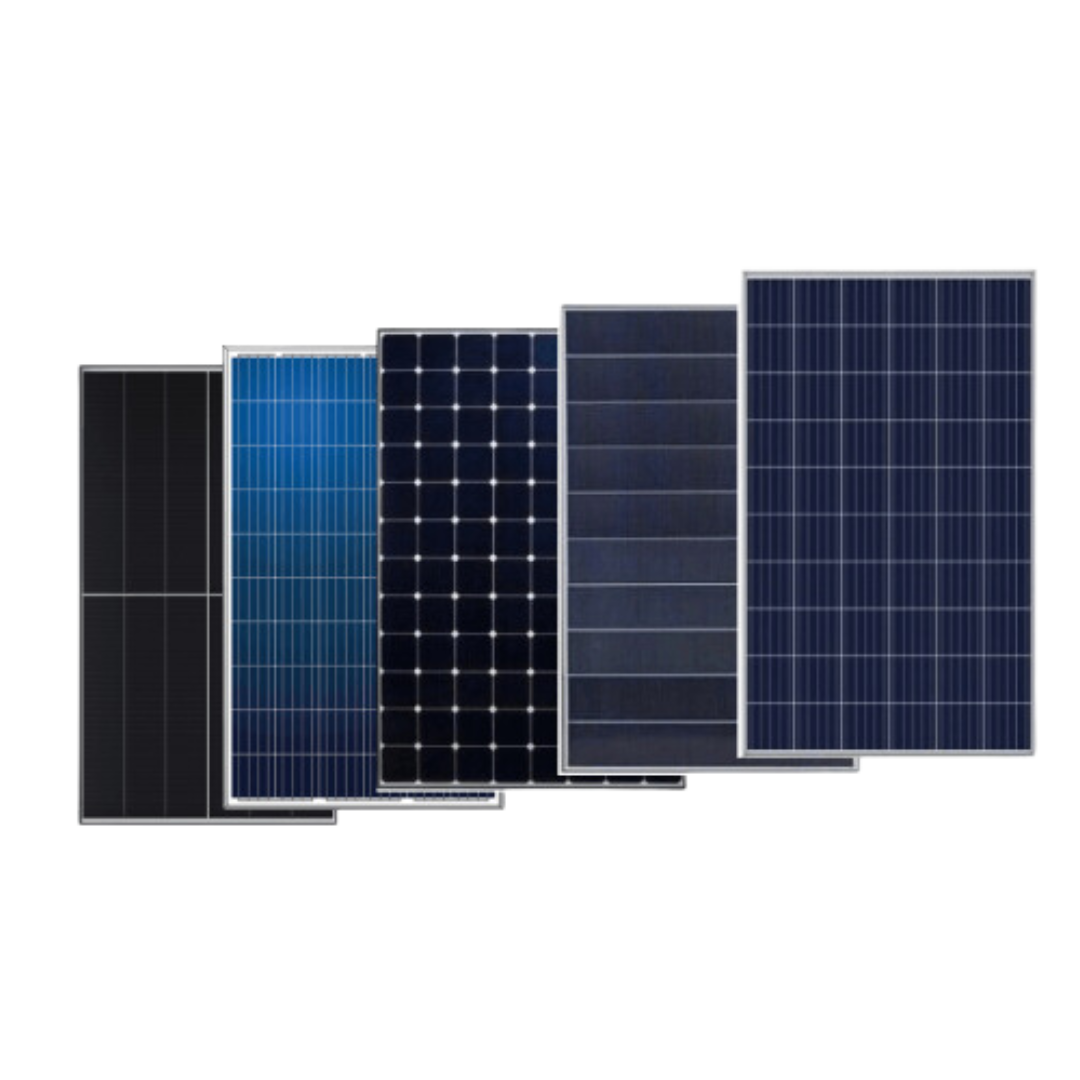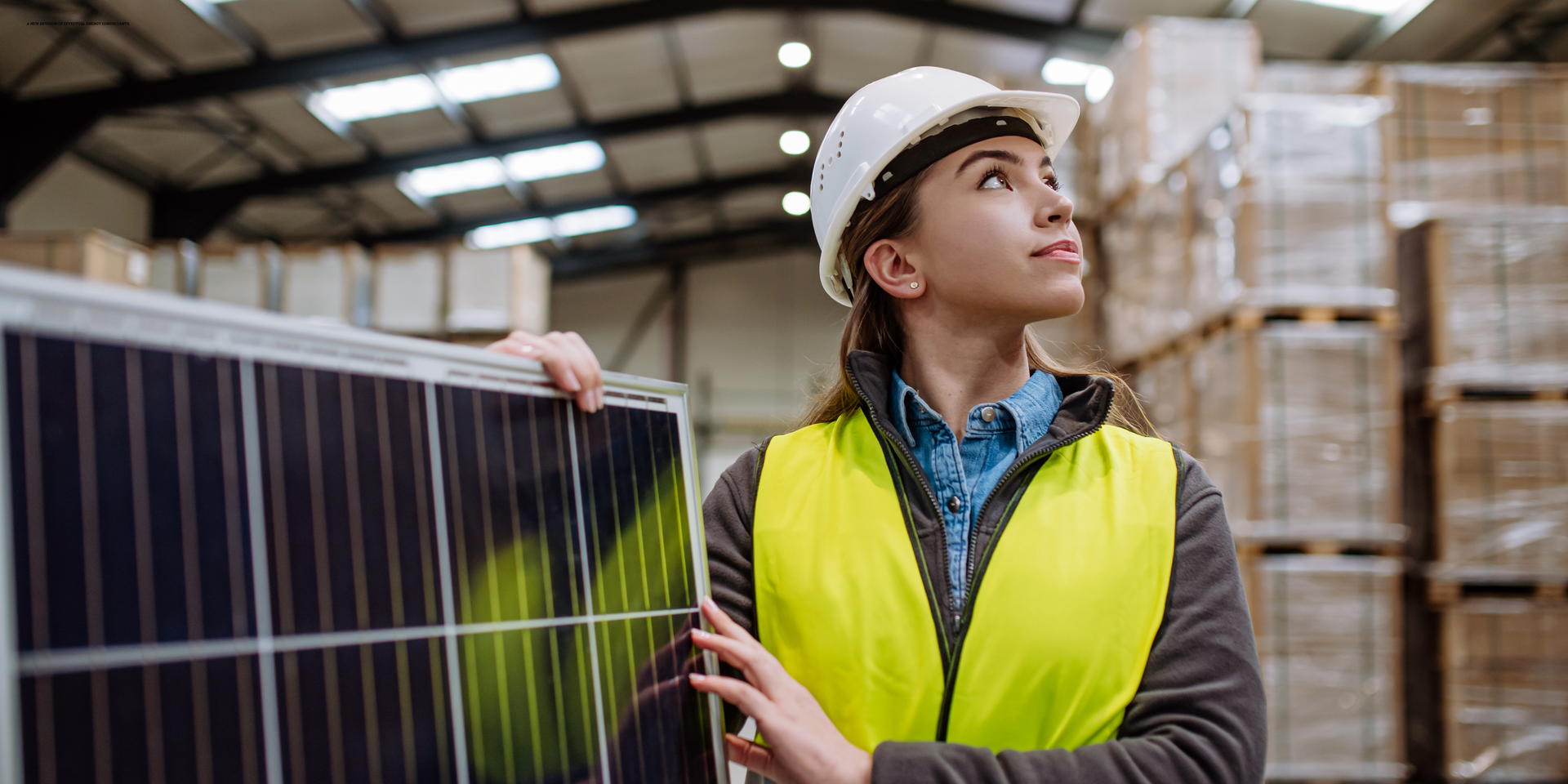Navigating the Rising Costs of Electricity in South Africa
Electricity in South Africa has become a bit like that pricey coffee you know you shouldn’t buy every morning but still do—except with electricity, you don’t really have a choice, and the damage to your budget is quite more significant.
Thanks to Eskom's latest tariff hikes, keeping the lights on has become a whole lot more expensive.
Let’s dive into what’s happening, why it matters, and how South Africans are navigating these rising costs.
Chris Sache, Former Eskom engineer and Current Founder and CEO of Effectual Energy Consultants has added some advice from his personal experience within the industry as well as some mind-blowing calculations that will shock you.
A Brief History of Eskom Tariff Hikes
Why the Price Hikes In Context of Rising Electricity Costs?
What is Compound Interest?
Compound interest is the interest you earn on both the initial amount of money and the interest that has already been added to it. In simple terms, it means that the amount grows faster over time because you’re earning interest on the interest.
How Does This Relate to Electricity Tariffs?
Now, let's apply this concept to your electricity bills. If Eskom raises electricity tariffs by, say, 15% each year, you're not just paying 15% more each year based on your original bill. Instead, each year, the 15% increase is applied to the new, higher bill amount from the previous year.
Here’s how it works:
- Year 1: Let’s say your electricity bill is R5,169 per month.
- Year 2: With a 15% increase, your new monthly bill becomes R5,944.35 (15% of R5,169 is R775.35, added to your original bill).
- Year 3: The next 15% increase applies to R5,944.35, not the original R5,169. So now, your bill is R6,836.00.
Each year, the increase is calculated on a higher amount, just like compound interest, so your electricity costs grow faster and faster.
How Eskom's Tariff Hikes Impact You
For businesses
Table 1 - Eskom Tariff Hikes for Companies
Graph 1 - increase % since 2009 -2023
Graph 2 - Increase per year
For Residents
And what about regular folks? These rising electricity tariffs are having a noticeable impact on many South Africans, making it harder for people to manage their household budgets. For those living in urban areas with lower incomes, this situation is particularly challenging. As electricity bills continue to rise, some households are being forced to cut back on their electricity use or switch to alternatives like candles or gas. While these options might be cheaper, they’re not ideal or convenient, especially in the modern world.
To put things into perspective, let’s compare your electricity bill to your mortgage payment:
Imagine your home costs R3,000,000, and your monthly mortgage payment is around R28,950.
Currently, your electricity bill is 18% of your mortgage payment, which equals R5,169 per month.
If electricity tariffs continue to increase with compound interest:
● By the year 2037, your electricity bill could be 108% of your mortgage payment.
● This means you’ll be paying R31,333.46 per month for electricity, which is more than your mortgage payment.
Now, consider this: while your mortgage payment is likely to stay the same, electricity tariffs are expected to keep increasing. In about 10 years, you could end up paying more for your electricity each month than you do for your home
Graph 3 -Electricity Cost And Mortgage Payment As A % Of Home Loan Cost (2024-2043)
The Risk of an Endless Price Hike Cycle
Finding a Sustainable Path Forward
So, what’s the solution? Eskom is in the process of some big reforms, like splitting into different entities for generation, transmission, and distribution.
The idea is to create more competition and, hopefully, drive prices down. In the meantime, many South Africans are looking into energy-efficient solutions and alternative power sources to keep their costs manageable. Think of it as swapping out that expensive daily coffee for a homemade brew—it might not be as convenient, but it saves money in the long run (Alternative Info & Dev Centre).
If Eskom continues to implement a 15% tariff increase per year, the cumulative impact on electricity costs over time will be significant.
Here's an outline of the potential cost benefits of switching to solar power under such circumstances:
1. Compound Effect of Annual Increases
A 15% annual increase might seem manageable at first glance, but the compounding effect can lead to a drastic rise in costs over a few years. For instance, if your electricity bill is R1,000 per month today, a 15% increase would push it to R1,150 next year. After five years, that bill could exceed R2,000 per month due to compounded increases.
2. Long-Term Savings with Solar Power
By installing a solar power system, you can lock in your energy costs and protect yourself from these annual increases. Even though the upfront cost of a solar installation might seem high, the break-even point could be reached much sooner if Eskom continues with these aggressive tariff hikes. Over the typical 25-year lifespan of solar panels, the savings could be substantial—potentially offsetting the entire cost of the system several times over.
3. Insulation Against Future Price Hikes
Each year that Eskom raises tariffs by 15%, the cost of grid electricity becomes more prohibitive, making the savings from solar power even more pronounced. As grid electricity becomes more expensive, the relative cost of maintaining and operating a solar system (which has minimal ongoing costs) becomes more attractive.
4. Avoiding the ‘Utility Death Spiral’
As more consumers and businesses turn to solar power to escape these escalating costs, Eskom may face reduced demand, which could lead to further price increases in an attempt to cover its fixed costs. By investing in solar, you insulate yourself from this potentially vicious cycle, ensuring that your energy costs remain predictable and manageable.
5. Potential Return on Investment
The return on investment (ROI) for solar power improves as electricity prices rise. If Eskom continues to increase tariffs by 15% annually, the payback period for a solar installation could be shortened dramatically as well as increasing the return on investment (ROI), making it a financially prudent decision sooner than later.
By Clerissa Holm
•
March 25, 2025
Imagine being able to charge your phone with nothing but your clothing. Well, all you need to make that possible is solar fabrics. Solar fabrics are a relatively new solar technology that uses different materials like photovoltaic textiles (made from two different types of polymer fibers that are woven together) to create solar fibers that generate power just like regular solar panels do. This dynamic solar technology is not only incredibly useful but also very stylish. The sustainable energy market is changing, people don’t just want stagnant energy solutions but are leaning more towards flexible and ambitious new solutions that combine efficiency with aesthetics. This unique approach to sustainable energy is sure to change the sustainable energy industry for the better. Here is everything you need to know about this revolutionary solar technology.
By Clerissa Holm
•
March 24, 2025
Have you ever heard of the word Agrivoltaics? If not, don’t worry. Here is everything you need to know about agrivoltaics. Agrivoltaics refers to the use of solar panels to generate power while using the same land for agriculture. In other words, grow crops on the same land you use for solar panels. This allows you to save space and use your land more efficiently by simultaneously generating power. That being said, why do you need to know about agrivoltaics? In a world full of mass production and disproportionate waste, available space is growing rare and sustainable energy solutions are becoming more and more relevant. That is especially true if you are a farmer or a business operating in South Africa, where power outages are the norm rather than the exception. Whether you are a farmer in the agriculture industry looking for a more sustainable energy solution, a business looking to invest in a new and exciting renewable energy niche or an individual trying to go off the grid, agrivoltaics is the perfect solution for your renewable energy needs.
By Clerissa Holm
•
February 3, 2025
South Africa, with its high reliance on coal-based energy, is taking bold steps to address climate change. Corporate social responsibility (CSR) plays a pivotal role in reducing carbon footprints, with businesses aligning their operations with environmental sustainability. Regulatory frameworks such as the Climate Change Act and Carbon Tax Act, coupled with voluntary sustainability initiatives, create opportunities for companies to transition to greener practices. Among these, adopting renewable energy solutions like solar panel installations is a practical and impactful step.
By Clerissa Holm
•
February 3, 2025
Solar energy is more than a renewable power source; it’s a force for social, economic, and environmental change. Across the globe, solar projects are illuminating homes, powering businesses, and fostering sustainability in ways that traditional energy systems often cannot. These initiatives are not only addressing energy access but are also transforming communities by driving economic growth, improving quality of life, and reducing environmental impact.
By Clerissa Holm
•
January 29, 2025
Investing in solar energy in South Africa is an excellent choice, with over 2,500 hours of sunshine annually in many regions, South Africa ranks among the world’s best locations for solar energy. This abundant resource, coupled with rising electricity tariffs and load-shedding challenges, underscores the growing importance of solar power as a sustainable energy solution. With proper care and maintenance, solar systems can operate effectively for 25 years or more, offering consistent energy savings and reducing reliance on the national grid. South Africa’s unique climate and energy landscape play a significant role in shaping the performance and maintenance needs of solar systems. Here’s what you can expect from your solar system over its lifespan and how to optimise it for South African conditions.
By Clerissa Holm
•
January 29, 2025
South Africa is at a critical turning point in its energy landscape. With Eskom’s proposed electricity tariff increase of 36.15% set for April 2025, the financial strain on households and businesses is set to intensify. The sharp rise in electricity costs highlights the urgent need for alternative energy solutions, positioning solar power as a critical component of South Africa’s energy future. As a renewable, cost-effective, and sustainable option, solar power is not just a response to the crisis—it’s a transformative opportunity for the country.
By Clerissa Holm
•
November 20, 2024
You might have heard rumours circulating about a staggering 60% increase in electricity costs next year. We’re here to give you the facts and explain why Eskom’s plan has left many South Africans feeling like they’re being taken to the cleaners. In this article, we’ll break down the motivations behind Eskom’s steep hikes and explore the potential impact on everyday South Africans. Drawing from industry insights and economic expertise, we’ll also offer predictions on what’s ahead for electricity costs and discuss why a new solar boom could be on the horizon.
By Clerissa Holm
•
November 20, 2024
When I founded Effectual Energy Consultants , my vision was simple: to help South African homeowners and business owners harness solar power in a way that’s effective, sustainable, and suited to our environment. Over the years, as the solar industry has evolved, we’ve grown our understanding of what it takes to design high-performance home solar power systems that thrive in South Africa’s unique climate. Whether load shedding will restart or not, there are multiple reasons to go solar, such as Eskom's push for tariff hikes in January 2024. Read more in our article - " The Impact of Eskom's Tariff Hikes: Navigating the Rising Costs of Electricity in South Africa " Today, I want to share some insights that will guide you in choosing the best solar panel for your home, covering top brands that deliver on efficiency, durability, and overall value.
By Dennis Kriel
•
October 9, 2024
5 Solar-Powered Gadgets You Didn’t Know Existed
By Clerissa Holm
•
October 9, 2024
The internet is full of conflicting reports about Eskom’s current situation—some good, some bad. You might be wondering, like most South Africans, if load shedding is about to make a comeback. Can our power grids really handle the pressure, especially during peak demands? The truth is, that many businesses are already preparing for the worst, actively searching for ways to shield themselves from the unpredictable and escalating electricity costs while aiming for energy independence. Because let’s face it, when the metaphorical banana hits the ceiling, you’re going to want a solid backup plan. Over the last decade, electricity prices have skyrocketed, far outpacing inflation. This has placed an enormous burden on companies, particularly those whose operations depend on stable, reliable energy. Eskom’s financial challenges aren’t going away anytime soon, and with more price hikes likely on the horizon, it’s no surprise that businesses are increasingly turning to solar power for solutions.
Show More

